The Apple iPhone 6s and iPhone 6s Plus Review
by Ryan Smith & Joshua Ho on November 2, 2015 8:00 AM EST- Posted in
- Smartphones
- Apple
- Mobile
- SoCs
- iPhone 6s
- iPhone 6s Plus
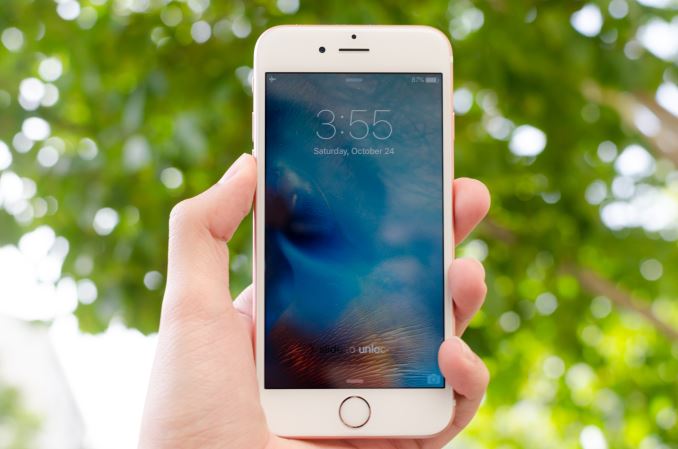
To be perfectly honest, this past year has been remarkably boring in the mobile segment. For whatever reason, phones have either stood still or regressed when it comes to overall quality. There are a few stand-outs that have been worth talking about like the Galaxy S6 lineup and the Galaxy Note5 lineup, but for the most part every phone I’ve reviewed this year has been disappointing in some way. I carry an iPhone 6 to make sure I stay current on changes in iOS, but my primary phone continues to be an HTC One M7. I was hoping to get a new Android phone this year, but so far nothing has really piqued my interest.
Part of the problem this year is that performance and battery life haven't been the most impressive in a lot of cases. By this point, it's really not a surprise that Snapdragon 810 doesn't deliver as much performance as it needs to for the amount of power that it draws. However, even independent of SoC it seems a lot of OEMs haven't really pushed the bar in design or attention to detail. Some phones have cameras with almost unacceptable post-processing quality, others continue to have poorly calibrated displays, and the ones that have none of those have problems with software experience or something else. In general, no Android phone I've seen this year really delivers everything that I'd want in a single package. There are phones that are clearly better than others, but nothing that rises to the level that I'd want before putting down a few hundred dollars.
In light of this lack of competition in the market, it's arguable that Apple is facing less competition than before. The iPhone 6s would continue to sell quite strongly even if this year's refresh was relatively minor as they would still end up quite strong competitively as they would be able to capitalize on momentum from previous years. If you were unfamiliar with the iPhone 6s and Apple's iPhone launch cycle, at first you might be convinced that Apple has done exactly that. However, in general the iPhone release cycle is such that industrial design is constant for two years at a time, so every other year sees a design refresh. When the design isn't refreshed, the phone often carries significant internal changes. In the past, the iPhone 3GS brought a better SoC, a faster modem, and a better camera. The iPhone 4S brought a new SoC, camera, and Siri. The iPhone 5s brought a new SoC, camera, and TouchID. In general, we can see a pretty clear pattern of evolution but it seems that with the 5s the refresh launches have generally brought new features as it has become insufficient to simply ship a faster SoC and possibly a modem and camera refresh to justify a new smartphone.
In the interest of diving into these changes at a high level, we can start with our usual spec table, which can give an idea for whether there's anything immediately worth talking about.
| Apple iPhone 6s and 6s Plus | ||||
| Apple iPhone 6 | Apple iPhone 6 Plus | Apple iPhone 6s | Apple iPhone 6s Plus | |
| SoC | Apple A8 2 x 1.3GHz Apple Typhoon |
Apple A9 2 x 1.85GHz Apple Twister |
||
| GPU | PowerVR GX6450 | PowerVR GT7600 | ||
| RAM | 1GB LPDDR3 | 2GB LPDDR4 | ||
| Display | 4.7-inch 1334 x 750 IPS LCD | 5.5-inch 1920 x 1080 IPS LCD | 4.7-inch 1334 x 750 IPS LCD | 5.5-inch 1920 x 1080 IPS LCD |
| Size / Mass | 138.1 x 67 x 6.9 mm, 129 grams | 158.1 x 77.8 x 7.1 mm, 172 grams | 138.3 x 67.1 x 7.1 mm, 143 grams | 158.2 x 77.9 x 7.3mm, 192 grams |
| Camera | Rear Facing 8MP iSight with 1.5µm pixels + True Tone Flash Front Facing 1.2MP F/2.2 |
Rear Facing 8MP iSight with 1.5µm pixels + True Tone Flash + OIS Front Facing 1.2MP F/2.2 |
Rear Facing 12MP iSight with 1.22µm pixels + True Tone Flash Front Facing 5MP F/2.2 + Retina Flash |
Rear Facing 12MP iSight with 1.22µm pixels + True Tone Flash + OIS Front Facing 5MP F/2.2 + Retina Flash |
| Storage | 16GB/64GB/128GB | |||
| I/O | Apple Lightning connector, 3.5mm headset | |||
| WiFi | 2.4/5GHz 1x1 802.11a/b/g/n/ac, BT 4.2, NFC | 2.4/5GHz 2x2 802.11a/b/g/n/ac, BT 4.2, NFC | ||
| Price | $549 (16GB) | $649 (16GB) | $649/749/849 16/64/128GB | $749/849/949 16/64/128GB |
At a high level, there are already a number of changes that we can talk about. The SoC is new and improved for this year with improved performance and power. The rear camera now supports 4K video recording and has higher resolution photos than what we’ve seen before. The front-facing camera is now higher resolution as well. The iPhone 6s finally has 2 GB of RAM, with improved power and bandwidth along with improved multi-tasking that comes from additional RAM. The modem now uses less power and also capable of higher throughput, as is the WiFi chipset.
Outside of these spec sheet changes, Apple has implemented a number of new features. One of the major highlights is 3D Touch, in which the display is force-sensitive and allows for new user interface actions based upon the amount of pressure applied to a point on the display. The front-facing camera now uses the display as an LED flash of sorts in low light, which measures ambient light in order to determine what white balance to use along with a backlight driver that temporarily spikes brightness to up to three times the normal maximum brightness for effective lighting. Both cameras now have Live Photos, which records a 1.5 second segment of video before and after the photo taken to capture a moment rather than an instant without the complication that comes with videos.
Design
Of course, before we can get into all of these changes we can start by focusing on the most immediate change, which is the design. For those that are unfamiliar with Apple’s iPhone launch cycle, the S launch cycle usually retains the same industrial design as the previous iPhone. As a result, the changes here are rather scarce. Those interested in a detailed description of the design should refer back to the iPhone 6 review.
However, there have been changes to the look and feel of the iPhone 6s lineup. The first, and most immediate change is the addition of a new color that Apple calls Rose Gold. This is much redder in tone than what we saw with the Apple Watch Edition, to the extent that it looks more like a light pink with a gold tinge rather than gold with a light pink tinge. I’m probably the last person in the world to consult on what color looks best, but I don’t really see anything wrong with this color.
Outside of color, the iPhone 6s lineup has changed in a noticeable way when it comes to materials and in-hand feel. The aluminum back cover is now 7000-series, which increases rigidity with the addition of zinc which increases yield strength, or the pressure needed to permanently deform the material. It’s likely that relative to the iPhone 6, ultimate tensile strength has also increased, although given that tensile strength is a test of how well the metal avoids breaking apart it’s unlikely that this property matters all that much. If you're actually reaching the ultimate tensile strength of a phone's back cover, you've probably already broken everything else in the phone.
With the use of this new aluminum back cover, the phone should be less susceptible to bending under extreme forces. I never had a problem with this when testing the iPhone 6 last year, but it shouldn’t be a problem now. Oddly enough, I did notice that the iPhone 6s is easier to grip than the iPhone 6, but the difference isn’t big enough that I would avoid using a case.
The other change is a new type of cover glass on the display, which uses a dual ion exchange process to make it tougher. According to Apple, this glass is the most durable of any in a smartphone today. A simple search with Google gives reason to suggest that Corning is making this glass as Corning holds a patent for this process. While we have no idea what Apple’s process is, the same dual ion exchange process occurs, which creates two distinct stressed layers that improves impact strength relative to a standard single ion exchange that is seen in Gorilla Glass.
Other than this, the design of the iPhone 6s remains quite good. The rounded edges and slightly curved glass help with in-hand comfort and things like the placement of the 3.5mm headphone jack on the bottom is a smart idea as the headphone jack is easily accessible when the phone is inside a pocket. We can talk about how the camera hump means that the phone doesn't rest completely flat on a table, but given that the phone has gotten about 15 grams heavier in both the iPhone 6s and 6s Plus I suspect it makes sense for Apple to avoid making the phone any thicker with extra battery than they have now. I would rather see thinner lines to insulate antennas here, but I suspect that there is some RF requirement that makes it difficult for this to happen.
Compared to something like the HTC One M9 which also has an aluminum unibody design Apple is far ahead in terms of overall ergonomics and cohesiveness. Relative to the Samsung Galaxy S6 I think the iPhone 6s is noticeably more comfortable due to the more rounded edges, but the iPhone 6s Plus and Galaxy Note 5 are pretty close in overall ergonomics. I do wish Apple would go to a front-ported speaker for the iPhone, but it seems that this is unlikely to happen due to the home button and bezel constraints.


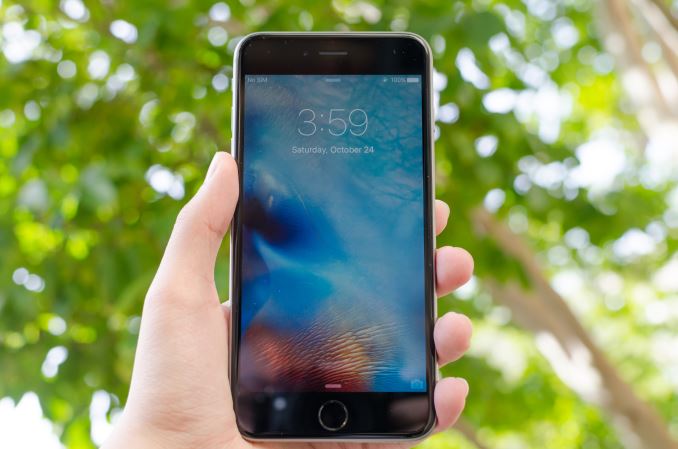
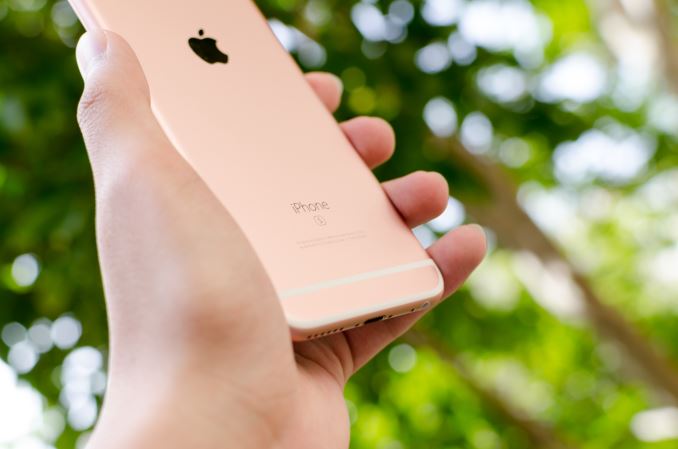
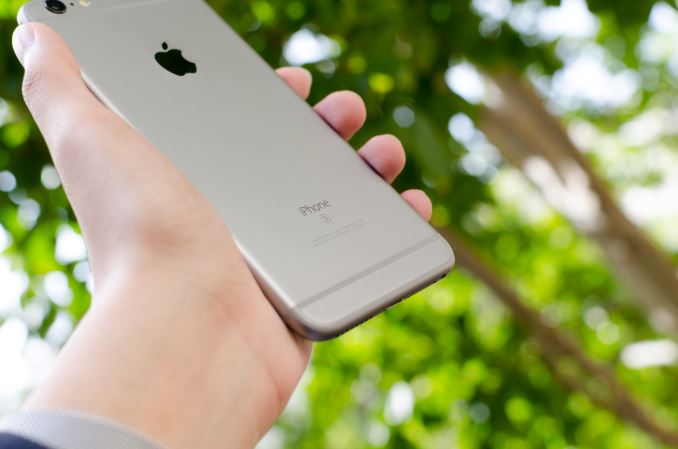
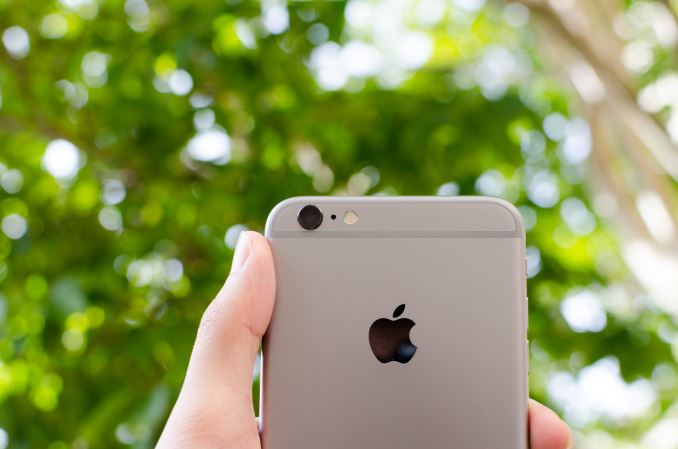
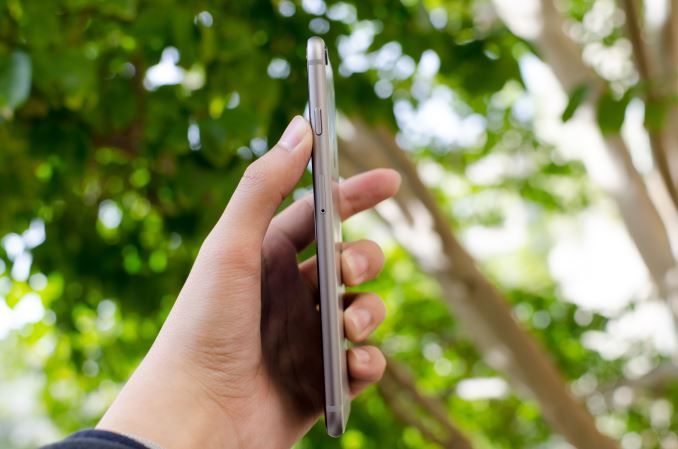
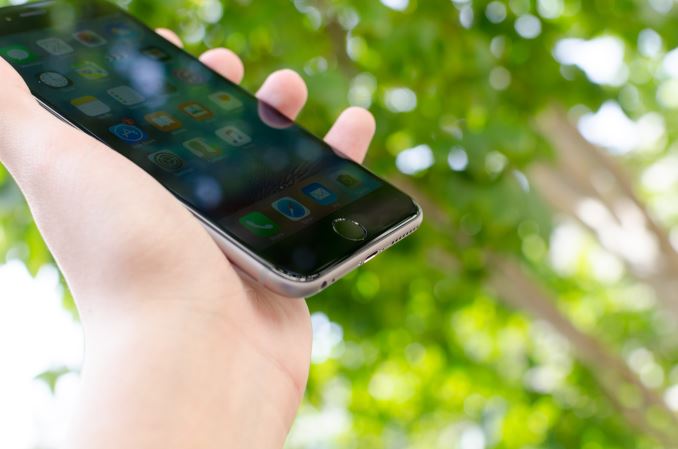
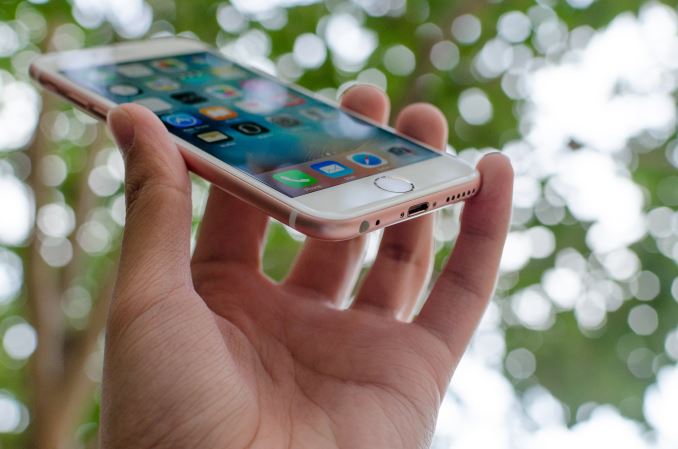








531 Comments
View All Comments
ciderrules - Tuesday, November 3, 2015 - link
You think long press is OK? Imagine if right clicking in Windows you had to hold the right mouse button down for a second before the context menu popped up. You think people would accept that? 3D Touch is literally right click. It's faster than that stupid long press and leaves long press for other less used options.Note 5 is inferior to the iPhone 6S Plus. In almost every way, except the screen. And the screen is not nearly as big an advantage as you try to make it out to be. Sound like someone is upset at their choice of purchase.
MattL - Tuesday, November 3, 2015 - link
@ciderrulesYour tone reveals your bias.
Long press is fine, you can have a long press that's as low as 500 ms or so, maybe even less... Pressure sensitive touch (I refuse to call it 3D touch lol) might be a slight bit faster, maybe more efficient, we'll see... but the truth is that a lot of the functionality that was added could have easily been done with a long press, right now people are seeing the contrast of going from no long-press like context specific functionality straight into pressure sensitive context menus, so it seems extremely improved because they skipped an entire step they could have done long ago.
You assume too much about me lol, I don't own a Note 5, I own a Note 4. I didn't see a reason to pay to upgrade to the Note 5, it's an incremental upgrade, worth getting for new users but not enough to rush to upgrade. I have owned an iPhone in the past, so I'm plenty familiar with Android and iOS... I love my Note 4 and don't see any reason to upgrade to either Note 5 or iPhone 6s Plus.
The iPhone 6s Plus is not superior in every way except the screen lol. The screen is very likely to be superior on the Note 5 (since Samsung has put out far superior screens for multiple generations now) though I'll hold off on the Display Mate review which does a *far* deeper analysis than Anandtech on screen. Areas where Anandtech makes offhand commments about viewing angle quality etc Displaymate will release hard numbers, such as how much brightness decreases at an angle, contrast loss, etc.
Don't downplay the advantage of screen quality in the Samsung phones over the iPhones though, they offer a *Far* superior contrast which often is considered the most important image quality aspect. They usually offer somewhat superior color accuracy though they both are getting so close to perfect they both are usually beyond (or close to beyond) what the human I can see. Keep in mind that the Samsung phones offer a mode that is calibrated and supports the Adobe color gamut, something that is very impressive on a mobile device (and for professionals is actually very useful). Also viewing angles are often far superior on the latest Samsung screens, especially in brightness and contrast (where you see a significant benefit).
All these things add up quite a bit and considering the screen is your primary interface input for your phone it shouldn't be underplayed... Honestly far more important than CPU and GPU speeds in my opinion (why I mostly stopped caring about CPU and GPU specs a couple years ago, though from a technical perspective it's interesting).
These are all things you should educate yourself on before you make assumption based comments about another persons intentions.
I am impressed with Apples progress on the CPU and GPU side... Storage (to a lesser extent since let's be honest PCIe storage was inevitable to come to phones, just like NFC payments came to Android phones first Apple hit this mark a bit early, credit given in context) is also a good improvement. Apple users have long argued they don't care about specs like that though ironically and honestly I've agreed with them for at least 2 years now (when I felt phones reached a certain level of power where they get diminished returns beyond that, unless some drastic new feature is discovered that needs serious more power, say maybe MS continuum where it needs to run as a desktop).
I'm just a proponent of a fair review, the distinct advantages of the Note 5 and Edge phones are heavily underplayed in this comparison while the advantages to the latest iPhone is heavily emphasized... Not only that Anandtech mentions two out of three negatives to the Samsung display aren't even mentioned in their Samsung review (and something I don't find mention of in other in-depth display reviews) so either they didn't feel the need to point it out when they actually reviewed the product or they felt the need to speculate or invent new negatives to make it look more balanced.
Comparisons are pointless unless they are fair.
MattL - Tuesday, November 3, 2015 - link
Also to add, one area where the latest Samsung phones excel (and other Android phones actually) is camera quality. Refer to the dxomark analysis where the iPhone's latest camera is literally a wash compared to it's last gen tech... while Android cameras (that were already better than last gen iPhone) have taken a further step up.Ironically it's a reverse of what you see with the SoC, where Apple took a big step forward while Android SoC languished a bit (though again to be fair it's 6 months older, but still it wasn't a bit step forward) while the iPhone camera performance literally was overall equal to last gen (a baby step forward in some areas and backward in others) while Android continues to use camera tech that progresses nicely forward.
osxandwindows - Tuesday, November 3, 2015 - link
Personally I like the iPhone camera better.I have a note 5 and iPhone.
Some people think DXO marc were paid.
Many people like the iPhone camera better tho.
The note 5 has a grate camera.
Heck people didn't like the sony z5 at all.
So on the camera side its completely your opinion.
Or should I say personal for a preference.
MattL - Friday, November 6, 2015 - link
But see it isn't your opinion lol. That's like saying the SoC is your opinion, which completely invalidates all the great work Anandtech did on reviewing every detail of that SoC.Now how the software uses that SoC (being the OS) comes somewhat down to opinion, do you like iOS vs Android etc.
Cameras are the same way, you can analyze the raw performance of a variety of aspects, especially the sensor. Now how you like the Camera app software, that can come down to preference or if there are trade-offs you might prefer trading one thing for another etc.
Also no one who has a clue thinks dxomark was paid off lol. They've been doing sensor analysis for a long time, before mobile phones were worth measuring they just did DSLR sensor analysis, including the top end professional grade cameras. They still do this and are still an oft referenced source not only by professionals and consumers but by other camera review sites around the web. Sensor and metric performance is just one aspects of a Camera of course, but they offer tangible and quantifiable metrics that can help you understand how cameras compare... and the latest gen of iPhones scored equal to the last gen, effectively no improvement, while the Android cameras keep leading the pack.
It's not surprising since the leading sensors on the Mobile list on dxomark are made by Sony which also has the leading sensors in professional grade DSLR and mirroless cameras as well. Sony has made best-in-class sensors (Nikkon has used sony sensors for many of their cameras for a while now) for a long time.
This is why anyone who has a clue just laughs at anyone questioning Dxomark or that a Sony sensor in a phone can be better than an Apple one.
Again there are more things to consider than raw performance, much like the iPhone's new superior SoC won't get you Android style widgets, a back button, or multi-tasking if you prefer those things... just like a new Android coming out with a faster SoC won't get you the iOS UI experience (if that's your preference)... but there are important metrics to evaluate and it feels like this review downplayed all the advantages of the other phones and overplayed the CPU and GPU advantage in the new iPhones. Some of us just think that's a bit biased.
ciderrules - Tuesday, November 3, 2015 - link
Something clearly bothers you to spend so much time typing a response.osxandwindows - Wednesday, November 4, 2015 - link
Naw man just felt like doing it.FL777 - Friday, November 6, 2015 - link
Great comment, I thought that the authors "fell in love" with the efficiency that Apple built into its new SoC. Being computer lovers, it is somewhat foregivable. However, they do appear to be school children saying, "Wow, this bright shiny SoC is the best damn thing in the whole wide world."Hands down, the Note 5 and Galaxy S6 at the very least compete with the iPhone 6S and in my mind, they are better phones for a number of reasons.
FL777 - Tuesday, November 3, 2015 - link
First let me compliment the authors of this article. No other website anywhere does as thorough a job as Anandtech in objectively reviewing a smartphone. You provide solid, objective facts for your reviews. That is something most reviewers utterly fail at. That being said I have some criticisms:1. The iPhone 6S display is just sad compared to the Ssamung S6 and Note 5
2. 3D Touch has been listed as buggy in other reviews and yet you don't mention this issue
3. The Note 5 and Samsung S6 BOTH charge much more quickly than the iPhone 6S. That is VERY IMPORTANT IN THE REAL WORLD
4. Both the Note 5 and the S6 have wireless charging, which is very convenient. The Note 5 has quick wirless charging which is revolutionary - no other phone has it.
5. The Samsung S6 and Note 5 SoC is effectively about 7 months older thatn the iPhone 6S SoC. I hope you will be as complimentary to the Galaxy S7 SoC when it comes out in January. It is supposed to be 25% faster than the 6S SoC. The new Samsung SoC is rumored to be a beast.
6. Also upcoming with the Galaxy S7 is alwo rumored (and this is just a rumor) to have its own 3D touch.
7. While the iPhone 6S is faster than the Note 5 and Galaxy S6, is there really that much difference in the real world? I think you have lost your objectivity because youa re impressed with Apple's SoC. And remember, the huge gains the IPhone 6S would not really be possible with Samsung's and TMCS's chip manufacturing skills. Apple should be concerned with Samsung's advent of manufacturing its own SoC chips - by all accounts, the Exnyos 7420 is a brilliant SoC and it STILL competes with the iPhone 6S, though it is nearly eight months older.
8. MANY professional reviewers including some professional photographer reviewers have stated that the S6 camera, the Note 5 camera and the LG4 camera are all better than the iPhone 6S camera. One rason is that they can take RAW photographs and have full manual control. Again, it appears that you have lost your objectivity when reviewing the camera functions.
9. I own the Galaxy S6 and one of my friends that I dance with has the iPhone 6S and you are INCREDIBLY wrong in your conclusions for low-light situations. At our dances, my friend's iPhone 6S is UNUSABLE, the sensor simply doesn't let enough light in My Samsung S6 has become the goto phone to take ALL of the crtical videos and pictures when we dance. One of my other friends owns an iPhone 6 and he can't use his phone at our dances. He borrowed my phone to vidoe his friend last week when his friend was dancing with a famous champion.
Simply said, you couldn't be more in error about the low-light capabliities of the two phones. Frankly the iPhone 6S is embarrassing in really dark situations.
I agree that the iPhone 6S and the Galaxy S6 / Note 5 are the two best phones on the market right now. Where we disagree is that the iPhone 6S is that much better than the Note 5 and S6. The display issue itself is embarrassing. The iPhone doesn't even have an HD screen. The 6S is the fastest smartphone on the planet right now, but so what????? It is only a microsecond faster than Samsung's last generation phones and most people won't care. Applies IOS is superior in its cohesiveness, Android is catching up quickly.
blackcrayon - Tuesday, November 3, 2015 - link
The display issue is far from "embarrassing". What's embarrassing is having a display that taxes your GPU to the point that you can't maintain top level performance over the course of an intense 3D graphics session. I'll take performance over more pixels any day, the small observable difference is a terrible tradeoff some of the manufacturers are making just to post a larger number on a spec sheet.